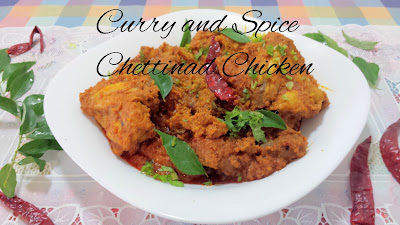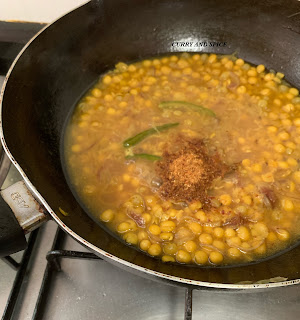This is my 200th post in the blog, I perhaps had to post something exotic.Then the rustic Bengali soul within me felt I must share Bengali Food today. I grew up in an essentially Purbabangio[EastBengal] family who brought with them it's culture, food and vouched never to part with it. Hence, I learnt to eat kochughechu[arbi] to shakpata[greens] right from my childhood. I might not have liked them much when young as much as I do now.
A good recipe is the one that uses the simplest of ingredients yet tastes great. Besides being fish lovers, the people of East Bengal can cook a wide variety of vegetables, using every part of it, from roots to the stems and leaves. Each family would have a piece of garden where they grew vegetables and fruits. There is no exaggeration, even the poor grow their food in the rural belts. They had, they lost, they migrated and regained in due course because they were strugglers. If we do not carry forward the legacy, who will?
Keeping this on our mind, I compiled together four simple, almost no spice vegetarian dishes which are cooked regular in many of the Bengali homes. Let us preserve our culture, food and take pride in them, besides exploring the new. The two can go together. Here for you are four Bengali vegetarian preparations that you can cook regular. I have used sugar in them which the people of East Bengal do not. I do not believe in the created divide between two Bengals but in the common culture and the language we share.
INGREDIENTS:
Malabar Spinach [Pui Shaak] : 2-3 sticks with the Leaves
Ridgegourd [Jhinge] : 2
Pumpkin [Kumro] : 1/4 of one
Long Beans [Borboti] : 2
Potato Aloo] : 2
Eggplant [Begun] : 1medium
Panchphoron : 1/4tsp [An equal amount of Nigella Seeds, Radhuni / Ajmod Seeds, Fennel Seeds, Cumin Seeds, Fenugreek Seeds mixed together]
Dry Red Chillies : 2
Green Chillies : 2
Bayleaf : 1
Salt : As required
Turmeric Powder : As required
Cumin Powder : 1 tsp
Red Chilli Powder : 1/2 tsp
Sugar : 1 tsp [optional]
Oil [mustard authentically] : 2 tbsp
METHOD :
Sugar : 1 tsp [optional]
Oil [mustard authentically] : 2 tbsp
METHOD :
Discard the root end of the Malabar spinach and cut lengthwise, roughly chop the leaves. Wash them wel
Cut the ridge gourds, long beans lengthwise and the potatoes, eggplants and pumpkins into cubes. Wash and keep in separate bowls. Rub with salt and turmeric.
Heat the oil in a wok. Temper with the panchphoron, bayleaf and the halved dry red chillies. Add the potatoes, stir and cover.
After 5 minutes, add the pumpkins, stir and cover again for about 4 minutes. Remove the cover, add the Malabar spinach, ridge gourds and eggplants.
Slit the green chillies and add. Also add the cumin and red chilli powders. Stir again and cover cook for another 5 minutes stirring in between.
Remove the cover, add the sugar, stir and its done. Make sure all the water has dried up.
JHINGE BEGUNER JHOL
INGREDIENTS :
Egg Plant [Begun] : 1
Nigella Seeds [kalojeera] : 2pinches
Red Chilli Powder : 1/2tsp
Turmeric Powder : 1/2tsp
Salt : As Required
Oil [authentically mustard] : 1tsp
Chopped Coriander Leaves : 1tbsp
Chopped Vietnamese or Mexican Coriander / Cilantro : 1 tsp [optional]
METHOD :
Peel and cut the ridge gourds and eggplants lengthwise. Wash and rub with salt, turmeric and red chilli powder.
Heat the oil in a wok. Temper with kalojeera. Add the veggies and stir at high heat.
Lower the heat and cover cook for 3-4 minutes. Remove the cover and add one small cup of water.
Again cover and cook for another 4-5 minutes. Add the coriander leaves.
Switch off after a minute, it should be done.
CHALKUMRO GHONTO
INGREDIENTS : [for the Lentil Fritters]
Masoor Dal : 1/2 cup
Nigella Seeds [kalojeera] : 1/2 tsp
Salt : As required
Turmeric Powder : 1/4 tsp
Sugar : 1/4 tsp
Oil to fry.
INGREDIENTS : [main]
Ash Gourd [chalkumro] : 1medium sized
Green Chilli : 2-3
Cumin Seed : 1/4 tsp
Salt : As Required
Turmeric : 1/4tsp
Dry Red Chilli : 2
Bayleaf : 1
Sugar : 1/2tsp [optional]
Oil : 2 tbsp
METHOD :
Peel, wash, cut and shred the ash gourd / winter melon / chal kumro. Add salt n turmeric, mix well.
Let us do the dal vadas first. Soak the dal in water for an hour. Grind to a paste discarding the water.
Add kalojeera, salt, turmeric, sugar. Beat well for 2-3 minutes and shape into small balls. Heat the oil in a wok and fry the fritters until golden brown.
Once done add 2 tbsp of oil in the remaining oil. As it get hot, temper with the cumin seeds, bayleaf and halved red chillies.
Add the shredded ash gourd, stir and cover. Keep the heat at low.
After 12-14 minutes, remove the cover, add the fritters and slitted green chillies. Stir and cover again.
Keep stirring every 3-4 minutes until the water dries up. Add the sugar, stir again, cook for 2-3 minutes, it should be done.
The lentil fritters have been used as a substitute for bori / sun dried lentil balls.
PALONGSHAKER GHONTO
INGREDIENTS :
Potato : 1
Eggplant [begun] : 2 small
Green Chilli : 2
Dry Red Chilli : 1
Panchphoron : 1/4tsp[an equal amount of fenugreek, fennel, cumin, Radhuni / ajmod, nigella seeds mixed together]
Salt : As required
Turmeric : 1/2 tsp
Bori [dry lentil balls] is a must in this dish but I did not have.
Oil : 1tbsp
METHOD :
Peel and cut the potatoes into small cubes. Wash. Cut the eggplants into cubes too. Rub salt and turmeric.
Chop the palak leaves and wash thoroughly.
Heat the oil in a wok. Fry the potatoes and egg plants separately and keep aside.
Temper the same oil with panchphoron and the halved dry red chilli.
Add the chopped palak, add salt and a little of turmeric. Stir and cover. A lot of water would release.
After 10 minutes, remove the cover, add the fried potatoes and slitted green chillies. Stir and cover.
Remove the cover after 5 minutes, the water should dry up by now. Add the fried eggplants. Stir carefully, let cook for 1-2 minutes. It is done.
If you are using fried bori, fry in the beginning, take out and add at the end.
We eat all the four dishes with steamed rice but it tastes good with chapatis too.














































